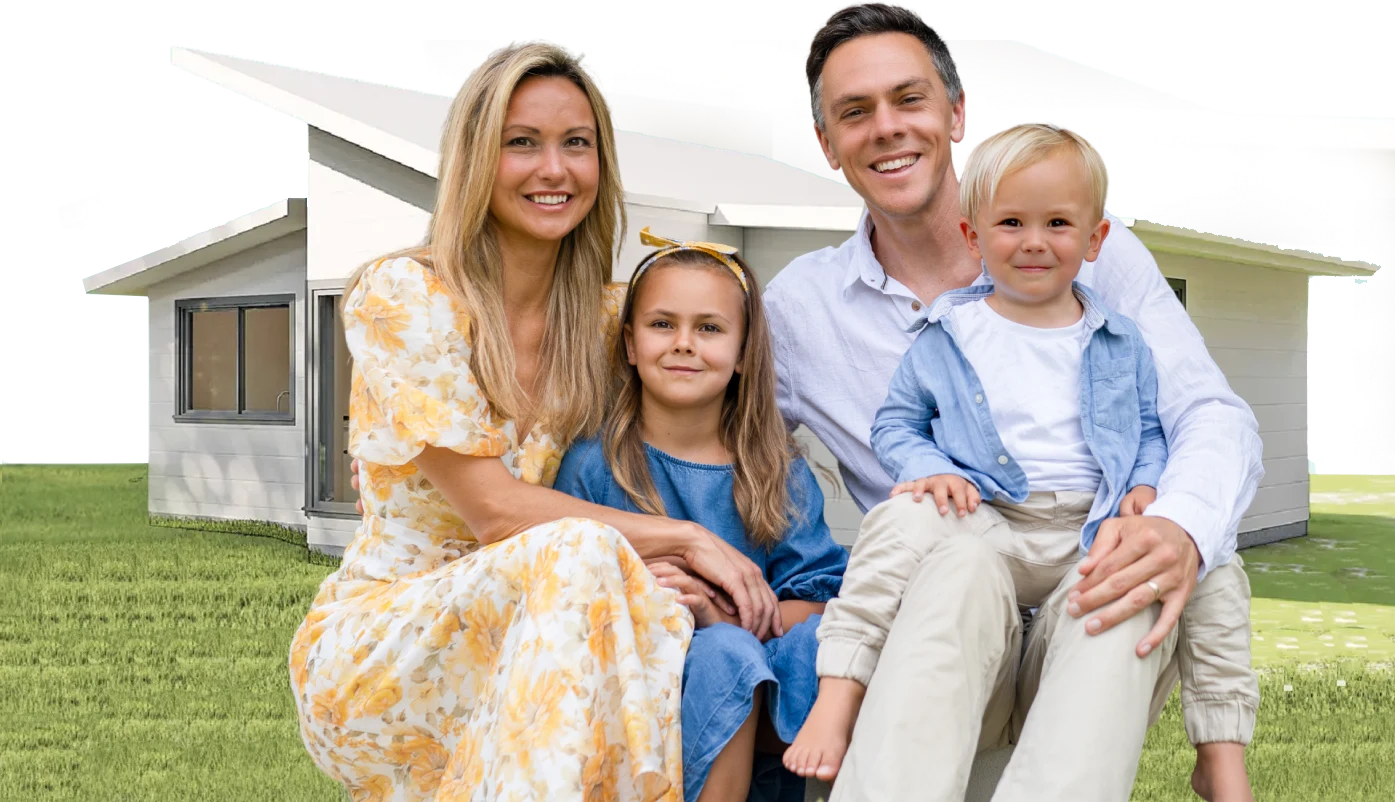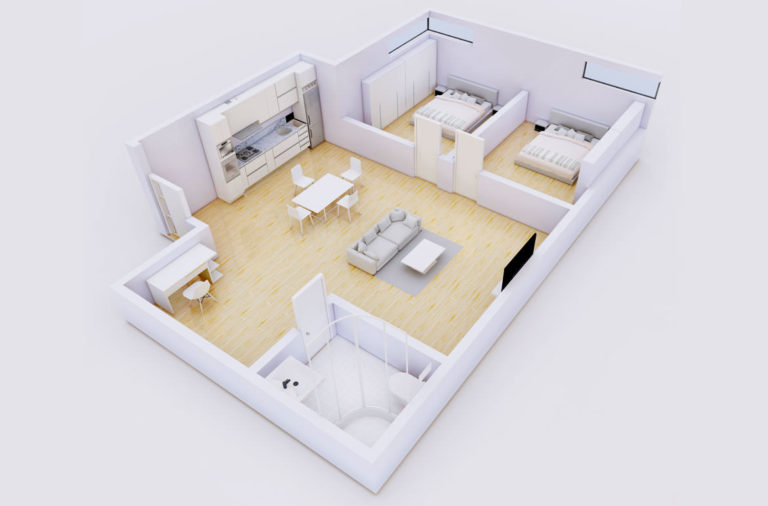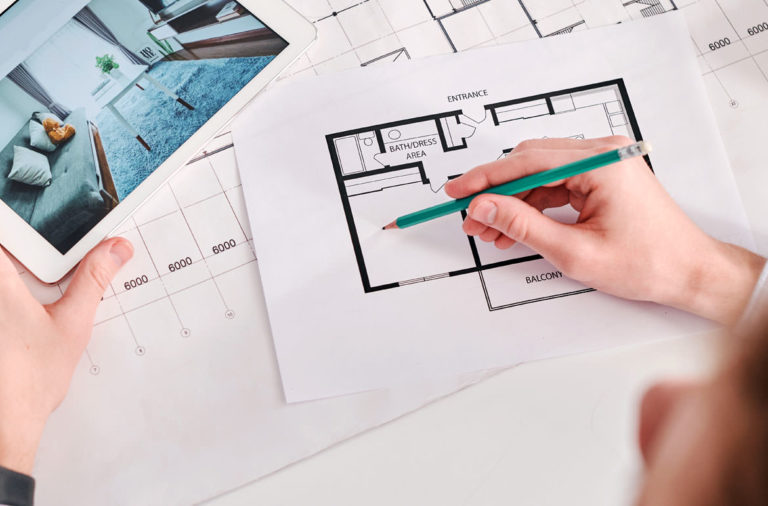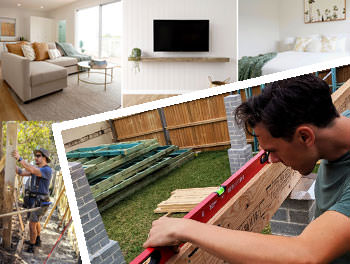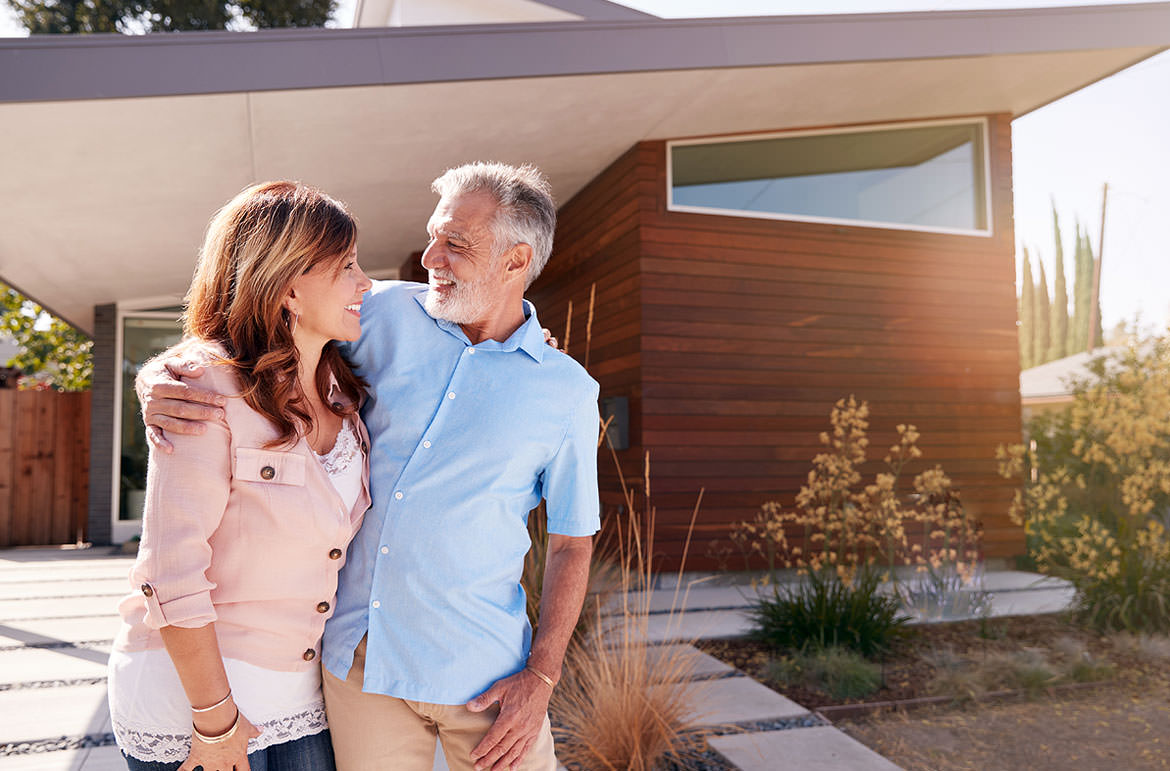
There will come a time when you have to design the exterior of your granny flat. So, what should an external granny flat design show?
The external design should show your ‘style’, while matching in with your main home, and meeting your Councils’ standards.
So, how do you include all of this in your design? Well, that’s why I’m here, to let you know, so let’s begin.
DON'T PAY A FORTUNE FOR YOUR GRANNY FLAT. Find out how to deal with council and build a granny flat for the lowest cost possible. Learn More.
Granny Flat Exterior Ideas
The exterior of your granny flat makes a big impression – it’s the first thing visitors see, and it will make or break the overall vision of your property.
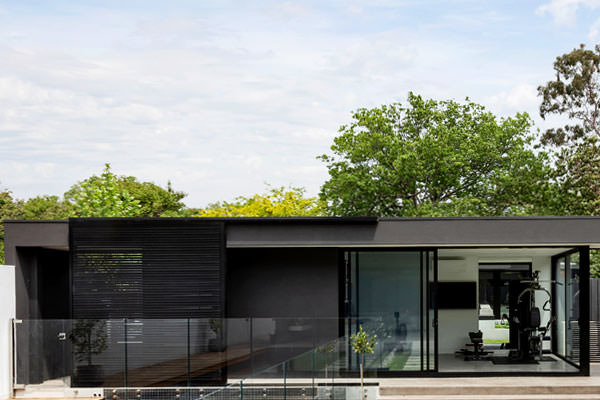
Ultra-modern granny flat are gaining popularity. Even though there are many classic choices shown below.
Essentially, the exterior should reflect the ‘style’ of the people living in the main home – that is, you.
This article I found shows the Top 10 Exterior Design Styles. Granted this is heavily focused on homes in the States, however it reflects common exterior design elements that people can draw from.
Whichever you choose, just be sure that your material, paint colours, and the overall design portray who you are and what you like.
It’s also important that it:
- Matches nicely with the ‘look’ of your main home.
- Is achievable in the space you have, and
- Meets your Councils’ standards (that is, their regulations about what ‘fits in’ with your surrounding neighbourhood).
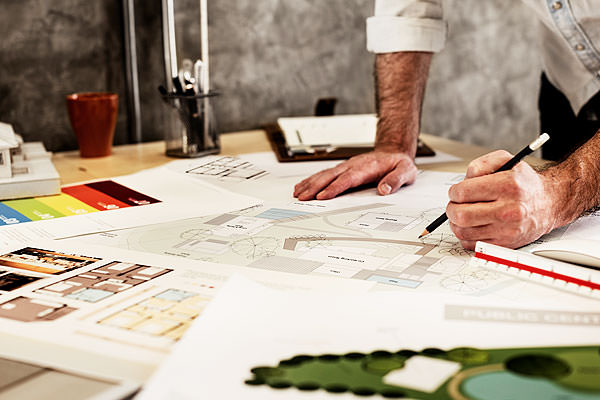
Designer considerations for granny flats need to be well thought out
This is where it will help to hire a professional designer, in particular an architect, to draw you up construction ready plans to ensure this is all included.
They will take into account your floor plan, internal space, streetscape, site restrictions, and your design as a whole.
Going back to your style, it’s important to collect images of what you like, and share them with your designer.
This is will let them know how you want your granny flat to look, giving them a better idea of the ‘style’ you’re trying to achieve.
What Makes a Great Exterior Home Design
The right exterior additions for your granny flat can significantly enhance its’ appeal.
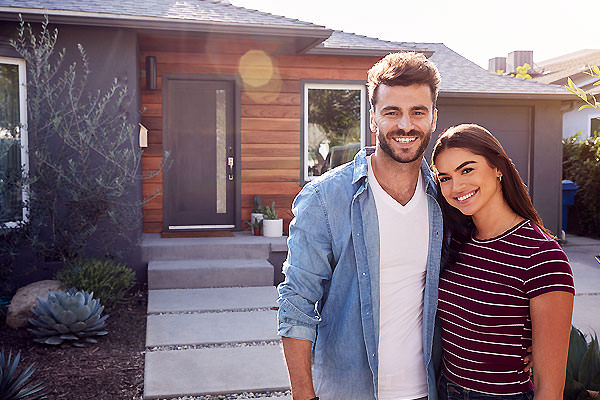
This multi-textured granny flat uses different materials and an attached garage to look like a fully functioning modern home
If you have the room, consider adding the below.
An Undercover Entrance
An area where you can stay undercover is ideal when trying to get from the car indoors while it’s raining, but is also a lovely sight at the front of the granny flat.
A small porch, for example, is enough to announce the entrance. Even better is that this is not considered “habitable space”, and so will not take away any room from your allowed floor area.
A Lovely Entryway
As well as having a covered entrance that defines the area, the door can have a big impact.
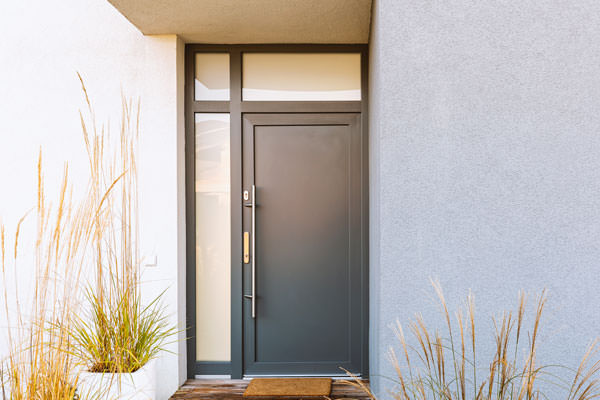
Crafting an undercover entrance way will transform your granny flat. (Windows around a door are a great way to let in natural light as well.)
Depending on the ‘style’ you’re going for, consider painting the door.
For example, this brightly coloured door is a Greek-inspired design.
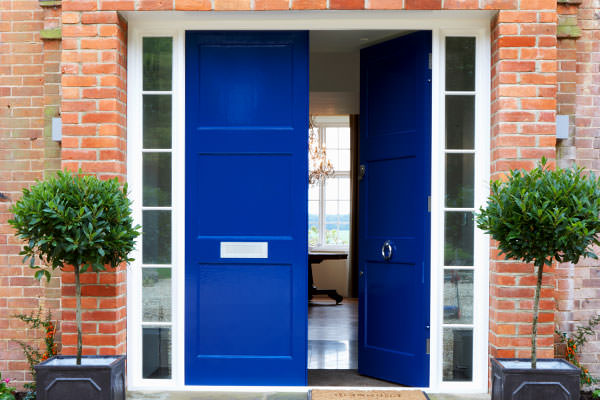
Going bold on a front door colour is a great idea. Making something functional and fun.
So, doors can be bold or subdued, but both have a significant impact.
Think about the size of the door as well – a bigger front door can give the feeling of a spacious entryway.
Lighting
Lighting out the front of a granny flat can work wonders. Just fit it in with your ‘style’.
For example, this means that you can transform the look of your entrance at night by how lights are placed in the landscaped area around the granny flat.
Windows
The shape and material of your windows should ‘fit in’ with the design of your granny flat.
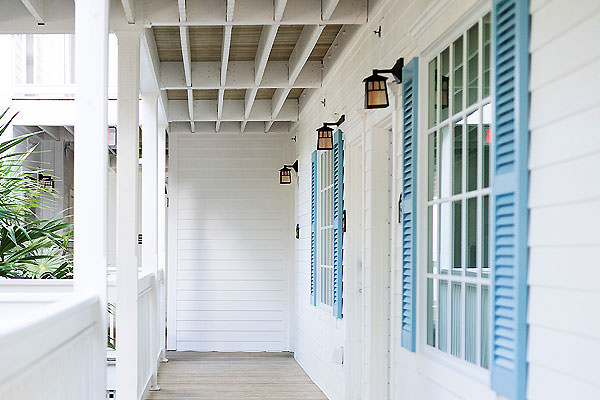
This Hamptons inspired granny flat, has matching shutters to go along with the whole theme and cladding of this secondary dwelling
Standard materials used are timber or aluminum. When thinking about what material to choose, along with how it looks, consider:
- How deep the window recesses into the wall.
- Its’ energy efficiency.
- Its’ durability.
- Your fire restrictions.
- Future maintenance requirements, and reducing these.
Another strong point to consider is the placement of windows – this is again where a professional designer will help.
The Right Roof
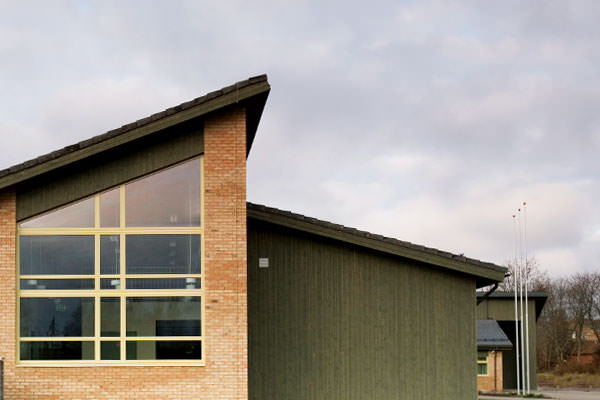
There are many granny flat roof options which can completely change the exterior look of your granny flat (And make better use of internal space)
- The aesthetics, including the material and colour, and whether it will work with your ‘style’ and your main home.
- Your landscape, and if it will work on the land that you have. For example, will it obtrude on any neighbouring homes?
- Legalities, such as height restrictions, and the impact it has on your setbacks.
Colour
You have a lot of flexibility when it comes to choosing colours and shades for the exterior of your granny flat.
Things to consider are:
- Is it just a current trend, or something that you have always liked?
- How will it look a generation from now?
- How easy is it to upkeep?
In particular, also think about what feature you want to enhance. Such as the entrance to my own granny flat below:
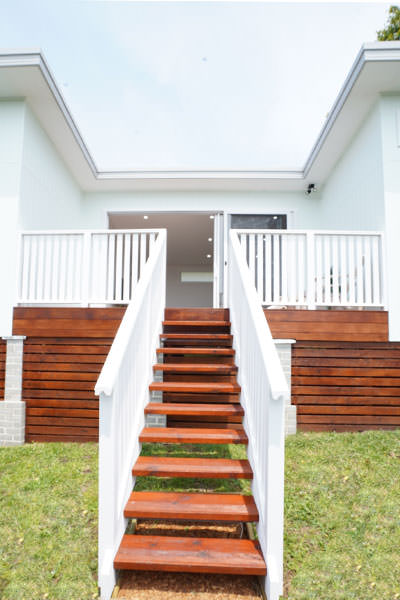
For my own granny flat, I went with a “Coastal” theme. Darker ‘boardwalk’ timber and light lime and white window frames
If you use restraint, and select a single feature and a single colour, and you will get a stylish result. Rather than highlighting too many areas, diminishing what you wanted to be the focal point.
How Can You Make Your Granny Flat Amazing
The first you must consider is location. Choosing the right placement for your granny flat is of the utmost importance.
Not all property’s are the same, so you should properly, carefully assess yours, to find the best spot for your granny flat.
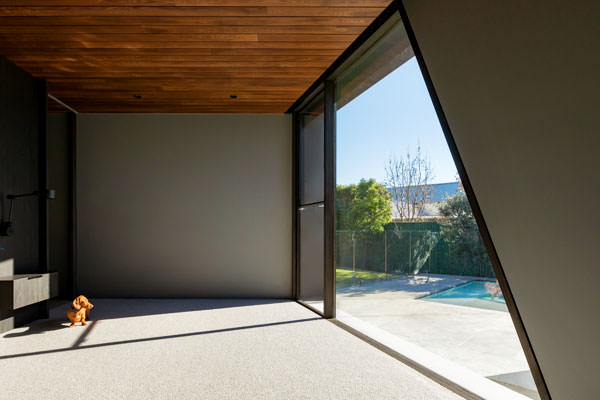
This customised granny flat looks incredible. Large glass panels and different materials has a huge impact
Step #1 is to decide whether your granny flat is going to be attached or detached.
When thinking about the location, again it can help to enlist the assistance of a designer, as you must consider:
- Natural light – You need to let in as much as possible.
- Cross ventilation – That is, air flow.
- Orientation – If possible, the granny flat should sit facing north.
- Your climate, and
- Principal Private Open Space – That is, how much privacy there is between your main home and the granny flat.
Now you have found a place for your granny flat, you need to design its’ layout. Refer to the below articles for the best layout and design ideas for the different types, areas, and sizes of a granny flat:
- Granny Flat Bathroom – (Design Ideas) + What You Have to Include
- Granny Flat Kitchen Designs
- Granny Flat Layouts – The “Must-Read” Checklist Before Building
- Granny Flat Interiors – With Examples of the Best Layouts
- Narrow Granny Flats – And Inspiring Design Ideas
- Granny Flats With Garages – Top 10 Designs to Consider
- 1 Bedroom Granny Flats – The “Must-Read” Guide Before Building
- 2 Bedroom Granny Flats – A Summary of Your Options
- 3 Bedroom Granny Flat – Is It Possible
- 2-Storey Granny Flats – And The Rules You Need to Follow
- Pool Houses – The Definitive Guide
- Shipping Container Granny Flats – The Definitive Guide
- Studio Granny Flats – A “Must-Read” Before You Build
- Granny Flat on a Corner Block – Here is What Needs to Be Done
How Can You Make Your Granny Flat Look Expensive
I have mentioned several times today that things may be easier if you hire a designer, especially an architect.
My posts, “Granny Flat Design Awards” and “Architecturally Designed Granny Flats”, describes their talent and what this can design.
Essentially, an architecturally designed granny flat will give you an expensive looking granny flat, as all options for your site are explored, and you will get the best use of your land.
You will have lots of natural light, and get a thermally efficient, creatively designed, sustainable granny flat.
You will get the ‘style’ you want, with the best possible features, such as multi-use rooms, plenty of storage, the best materials – resulting in a stylish, spacious, comfortable, expensive looking granny flat, but all within your budget.
As for ideas on how to make the inside of your granny flat look expensive, feel free to read this article by Interiors Addict.
What Materials Can You Choose for the Exterior?
The two common choices that you have for the external material are either cladding or a brick veneer. Let’s talk about what they have to offer.
Brick
There are several different types of bricks, some of which may protect your granny flat better than others.
“7 Incredible Brick Granny Flats I Want To Move Into + What to Look Out For” discusses the types of bricks, and the pros and cons of using a brick veneer.
Double Brick
Double brick has all the same advantages of a single brick veneer.
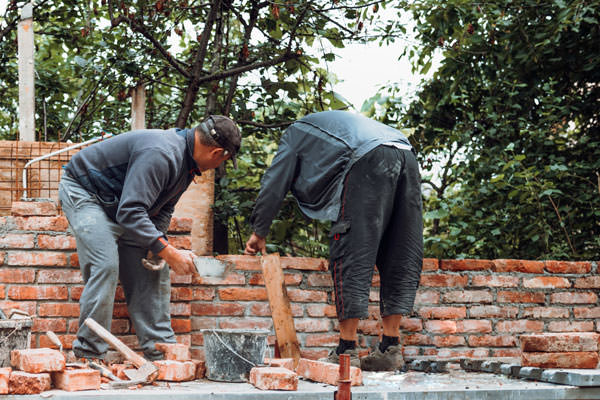
Recycled brick granny flats are popular. A sustainable way to generate a unique design
However, it has more disadvantages:
- It costs more.
- Given time, cracks may begin to appear if your foundation is not stable or your soil is reactive.
- You will lose more interior floor space – roughly 11sqm. This is nearly 20% of the space lost in a 60sqm granny flat.
As people don’t realise that your floorspace is measured from the outside walls (Hence thinner walls means more useable floorspace.)
Cladding
Cladding is when one material is applied over the top of another material, providing a layer that in construction is called a ‘skin’.
It can be made from a number of materials.
Cement Fibre, for example, is a popular material that is used for cladding.
The positives of using cement fibre cladding include that it:
- Is inexpensive.
- Needs almost no maintenance – other needing to paint it every 20 years, and you can just pressure-wash it using mild detergent once every few years.
- Is the thinnest of your wall options – vital to consider when thinking about how much internal floor space you have.
- Has thermal insulation equivalent to brick in many cases.
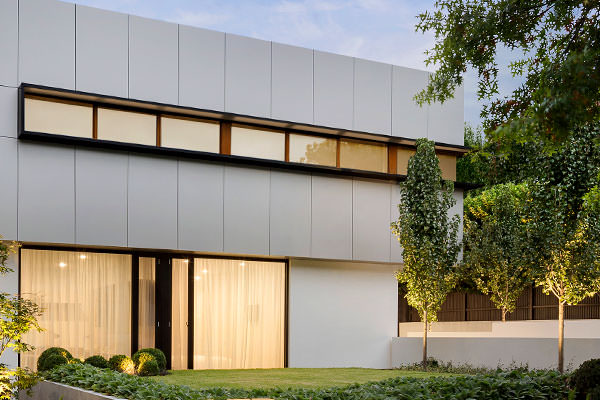
Cement fibre can ensure a contemporary look with relative ease
Its’ negatives include that:
- It doesn’t have acoustic qualities to the same standard as brick.
- It can be thought of as substandard in comparison to brick.
- Small, hard, items can dent it with force.
- Pollutants can wash-out its’ colour and radiance if it’s not washed as recommended above. (if you use cheap paints, which I highly discourage using)
Another popular option is cladding with a metal, such as Colorbond.
The advantages and disadvantages of building with this material can be seen at another article I wrote called: Colorbond Granny Flats – Where you can find out what you need to know before using Colorbond.
Then, you have horizontal cladding – or, even a timber clad.
Its’ advantages include that it:
- Is uniquely appealing.
- Meets, in some regions, the requirements for heritage (i.e. Chatswood, NSW).
Its’ disadvantages include that:
- It must be painted during construction, then re-painted every 4-5 years.
- It’s quite costly compared to vinyl and cement fibre.
- Sharp items can cause it damage.
- It’s not as insulated, so won’t keep the area as noiseless as brick.
- It can expand and contract unlike cement fibre, which means it is prone to leaking/water damage and will require more painting in the long run.
In short, cladding with either prefabricated prefabricated concrete panels, or concrete poured on-site has become more popular and is the best option in my opinion
The advantages and disadvantages of concrete can be seen here.
Fibre Cement Sheeting (FCS) can be used to create what is called Fibre Cement Cladding.
These choices can be a tough choice to make, but your Engineer will advise you on what material works best for your design, property, and foundation, eliminating a few options immediately. And they can also add their professional opinion about exterior cladding options.
Should Exterior Trim Match the Window Frame
As well as choosing your material, you’ll have to choose your colours. To make things easier, let’s first just clarify the difference between your exterior trim and window frame. The exterior trim, also called the casing, is an ornamental piece – the bit that frames the entire window.
The window frame is also called a sash. It is essentially the frame that encloses all the glass, moving together with the glass, making it the functional part of the window.
Now, back to the question at hand – should the colour of your exterior trim match the colour of the window frame? This is a common, and good question, however it has a bit of a complex answer.
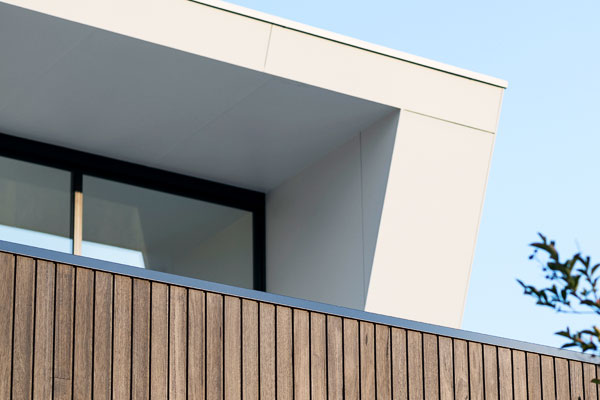
Contrasting windows frames against lighter walls
But, if you ask a professional designer, they tend to suggest that you use colours that contrast one another – particularly if you’re building a tall granny flat (i.e. one with a loft, above a garage, or a two-storey).
Doing so will add a splash of interesting colour, helping to split-up the frontage and producing a balanced appearance. Though, there are some cases where this rule can be excused – I will discuss these shortly.
A great colour choice is:
- A dark trim and a white/lighter coloured frame – The dark trim will really highlight the windows, whilst contrasting well with the light frame.
Now, the exceptions to the rule. Many newer models of windows have been designed with additional, in-built trims. Because of this extra frame, if you use a darker colour for the trim, it can look embellished.
Or, your trim may be wafer-thin. If so, it will not work as a contrasting piece. Instead, the frame will work best when it stays the fine, delicate, piece,
If you have either of these types of window, professionals tend to recommend that you use the same colour for your exterior trim as you do for your window frame.
Conclusion
Making the choices for your exterior can be overwhelming.
So, to make your vision come to life, select a designer and be sure that you show them examples what you want.
They will make sure that your new granny flat matches your existing homes facade, whilst letting you choose from a range of colours, materials and finishes.


